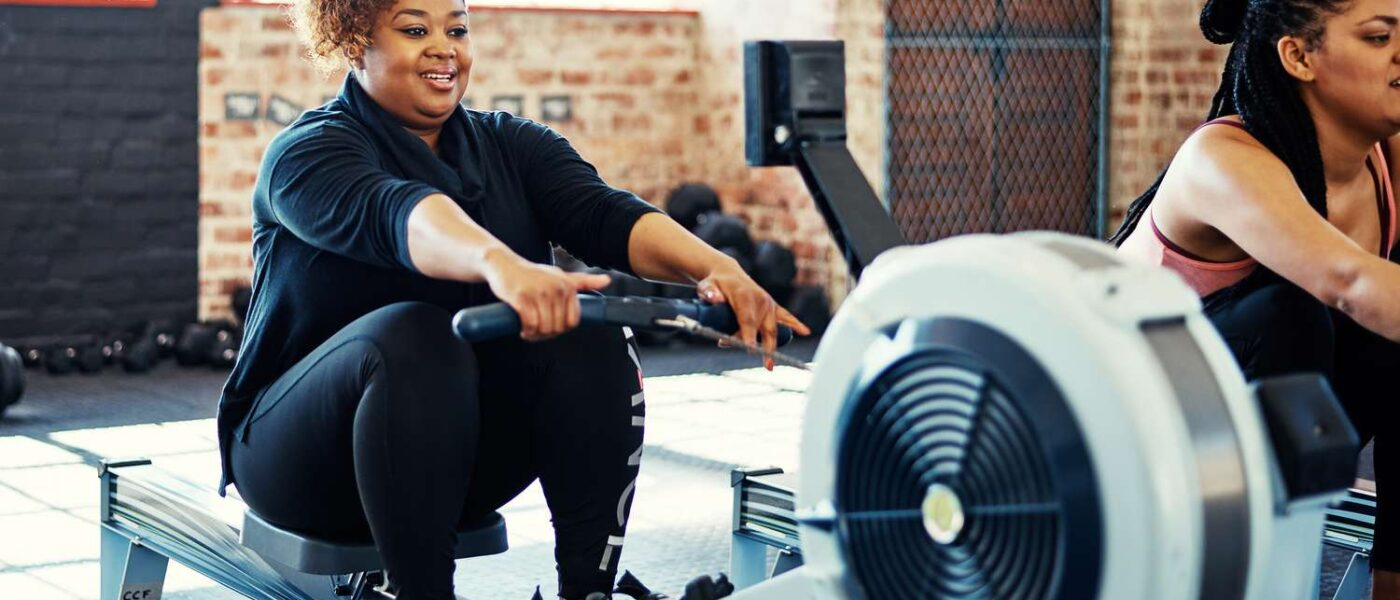How To Use Row Machine At Gym
Are you excited about trying out the row machine at the gym but not sure how to use it? Don’t worry, it’s actually pretty simple once you get the hang of it! In this article, we’ll show you step-by-step how to set up and use the row machine at the gym. Whether you’re a beginner or just need a refresher, we’ve got you covered. So let’s get started and learn how to use this awesome machine for a great workout!
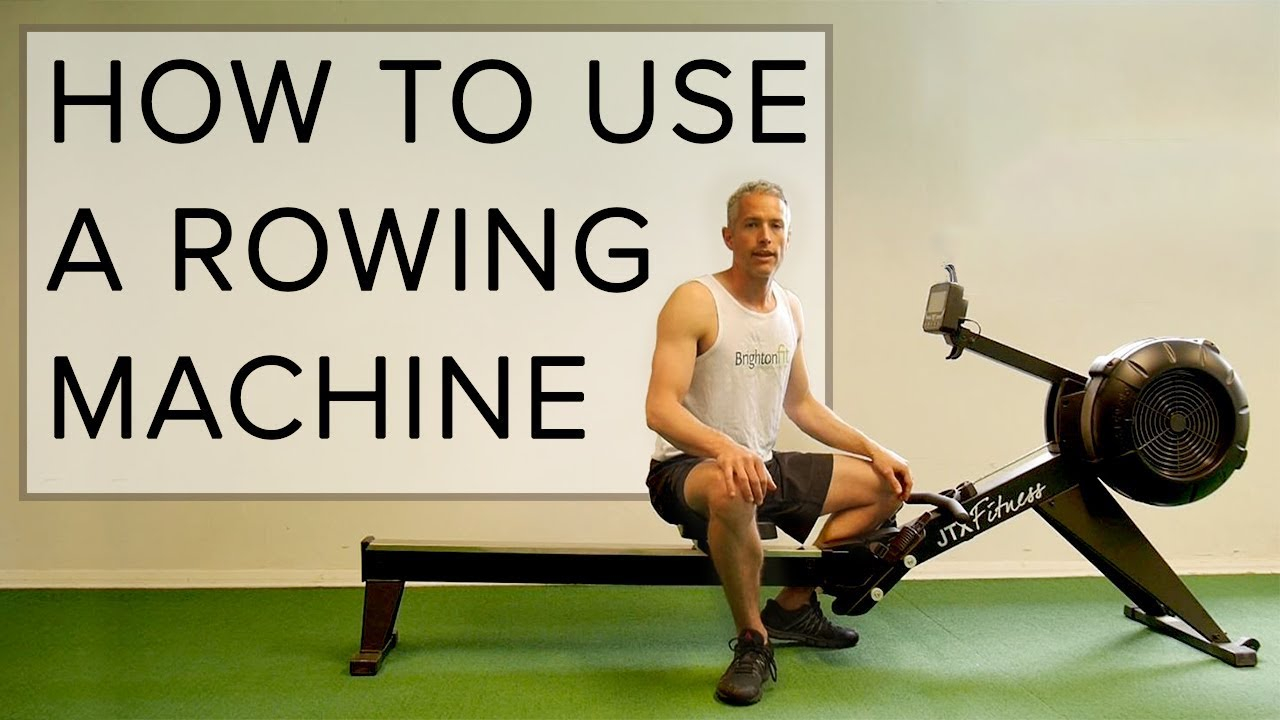
Choosing the Right Row Machine
If you’re looking to get a row machine for your home or to use at the gym, it’s important to choose the right one for you. This will depend on your fitness goals and the space you have available. Row machines come in different types, so exploring your options is a good idea.
Considering Your Fitness Goals
Before you decide on a row machine, think about your fitness goals. Are you looking to lose weight, build strength, or improve cardiovascular endurance? Different row machines offer different benefits, so it’s important to choose one that aligns with your goals. For example, air resistance row machines provide a great full-body workout, while magnetic resistance row machines offer a smoother and quieter experience.
Determining Your Space Requirements
Consider how much space you have available for a row machine. Some row machines can be quite large and may not fit in smaller homes or apartments. If space is a concern, you might want to consider a folding row machine that can be easily stored when not in use. Measure the dimensions of the space where you plan to keep the row machine to ensure it will fit comfortably.
Exploring Different Types of Row Machines
There are several types of row machines to choose from, including air resistance, magnetic resistance, hydraulic resistance, and water resistance. Each type has its own unique features and benefits. Air resistance row machines provide a dynamic and challenging workout, while magnetic resistance row machines allow for adjustable resistance levels. Hydraulic resistance row machines are compact and suitable for smaller spaces, while water resistance row machines simulate the feeling of rowing on water. Consider trying out different types of row machines to see which one you prefer.
Setting Up the Row Machine
Once you have chosen the right row machine for you, it’s time to set it up properly before starting your workout. This will ensure that you have a safe and effective rowing experience.
Adjusting the Footrests
First, adjust the footrests to fit your feet comfortably. Secure your feet in the foot straps, making sure they are snug but not too tight. This will provide stability and support as you row.
Setting the Resistance
Most row machines allow you to adjust the resistance level. If you’re just starting out, it’s a good idea to begin with a lower resistance and gradually increase it as you get stronger. Consult the user manual or ask a gym instructor for guidance on how to adjust the resistance on your specific row machine.
Positioning the Seat and Handle
Sit on the seat of the row machine with your feet secure in the footrests. Grab the handle with an overhand grip and make sure your arms are fully extended in front of you. This will be your starting position.
Securing Your Feet
Before you start rowing, double-check that your feet are securely fastened in the footrests. This will prevent them from slipping during your workout. Make any necessary adjustments to ensure a secure fit.
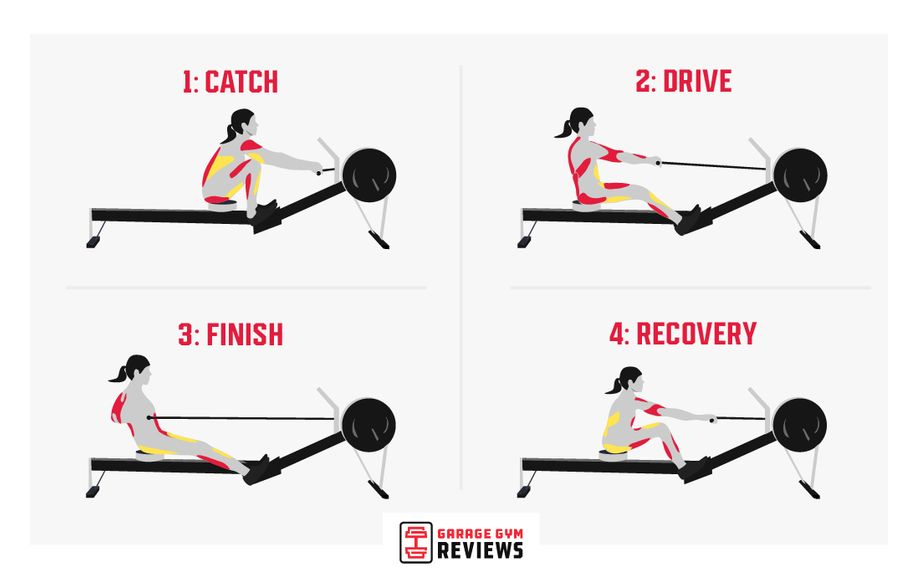
Proper Rowing Technique
Now that you have set up the row machine, it’s time to learn the proper rowing technique. This will help you get the most out of your workout and avoid any unnecessary strain or injury.
Maintaining Proper Posture
When rowing, it’s important to maintain proper posture throughout the entire exercise. Sit tall with your back straight and shoulders relaxed. Engage your core muscles to stabilize your spine and avoid slouching.
Gripping the Handle Correctly
Hold the handle of the row machine with a firm but not overly tight grip. Your hands should be shoulder-width apart and your wrists should be neutral, not bent. This will help you maintain control and prevent discomfort or injury to your hands and wrists.
Understanding the Stroke Phases
Rowing consists of four main phases: the catch, drive, finish, and recovery. Understanding these phases will help you execute each movement correctly. The catch is the starting position, where your knees are bent, and your arms are extended. The drive is the pushing phase, where you extend your legs and engage your core and arms. The finish is when your legs are fully extended, and your upper body is leaning back slightly. The recovery is the return to the starting position, where you bend your knees, lean forward, and slide the seat back to the catch.
Using the Legs, Core, and Arms
Proper rowing technique involves using your legs, core, and arms in a coordinated manner. As you push off with your legs, engage your core muscles and pull the handle towards your chest with your arms. This will allow you to generate power and maximize the efficiency of each stroke.
Coordinating Your Movements
To row effectively, it’s important to coordinate your movements. As you extend your legs, lean back slightly, and pull the handle towards your chest. As you bend your knees and lean forward, push the handle away from your body. This fluid and coordinated motion will help you maintain a steady and efficient rowing rhythm.
Starting Your Rowing Workout
Now that you have mastered the proper rowing technique, it’s time to start your workout. Before diving into intense rowing sessions, it’s important to warm up your body and set achievable goals.
Warming Up and Stretching
Before you start rowing, spend a few minutes warming up your body. This can include light cardio exercises such as jogging in place or jumping jacks to increase your heart rate and loosen up your muscles. After your warm-up, take a few minutes to stretch your major muscle groups, including your legs, back, and arms.
Setting Your Rowing Goals
Setting goals for your rowing workout can help keep you motivated and focused. Whether it’s rowing a certain distance, completing a set number of strokes, or reaching a specific time goal, having a target in mind can help you track your progress and work towards continuous improvement.
Establishing Your Rowing Intensity
Rowing intensity can be adjusted by changing the resistance level on your row machine or by rowing at a faster or slower pace. Start with a comfortable intensity level and gradually increase it as you become stronger and more experienced. Listen to your body and find a level that challenges you but doesn’t strain or exhaust you.
Monitoring Your Heart Rate
Monitoring your heart rate during your rowing workouts can give you valuable feedback on your cardiovascular fitness. You can use a heart rate monitor or the built-in monitor on your row machine to track your heart rate. Aim to keep your heart rate within a target range that corresponds to your fitness goals and current fitness level.
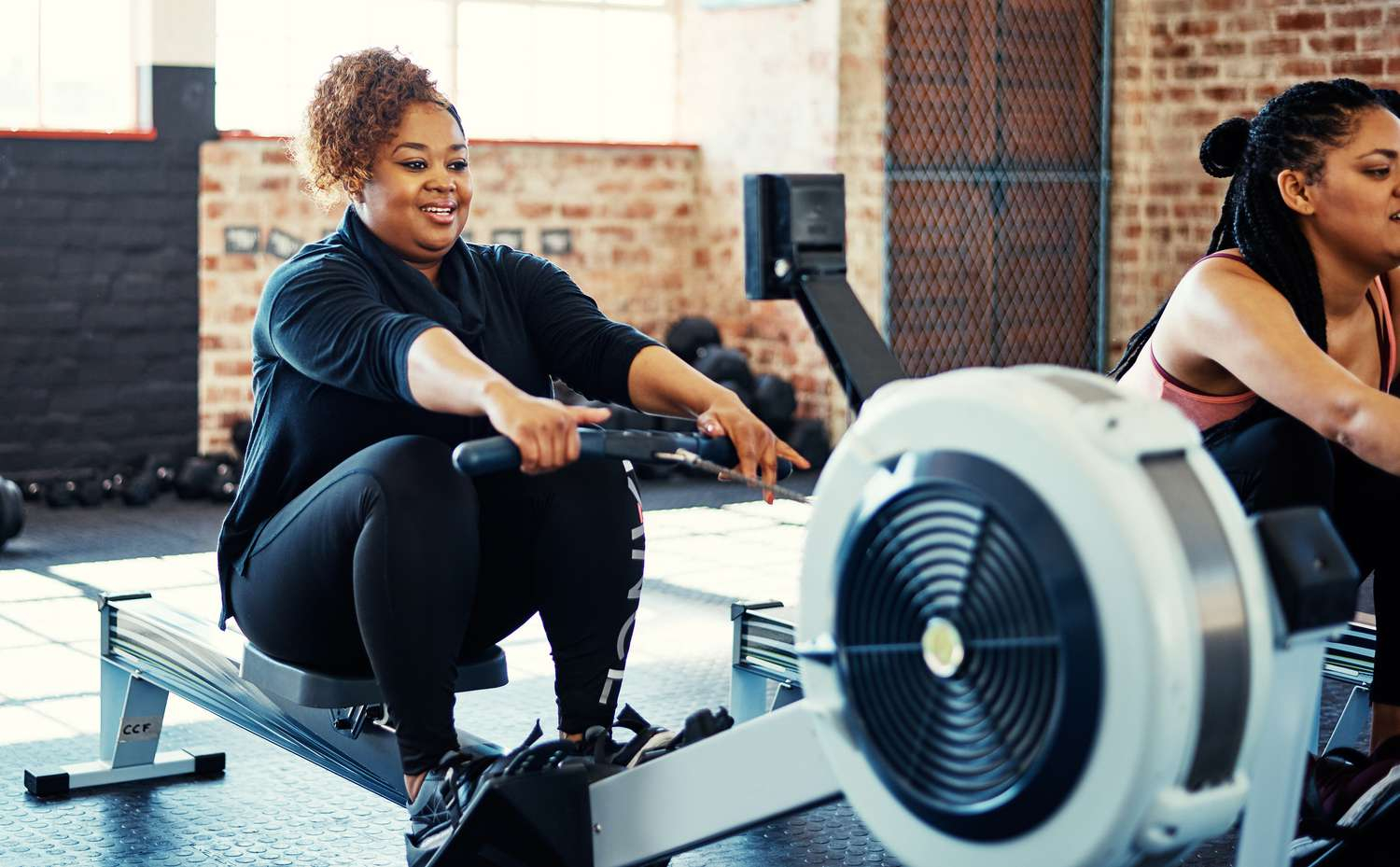
Effective Rowing Workouts
Rowing workouts can be varied and tailored to your specific goals. Here are a few types of rowing workouts that you can incorporate into your exercise routine.
Steady State Rowing
Steady state rowing involves rowing at a consistent and moderate intensity for a prolonged period of time. This type of workout is great for building cardiovascular endurance and improving overall fitness. Start with a comfortable pace that you can sustain for at least 20 minutes and gradually increase the duration as your fitness improves.
Interval Training
Interval training involves alternating between periods of high-intensity rowing and active recovery. This type of workout is highly effective for improving cardiovascular fitness and burning calories. For example, row at a high intensity for 1 minute, then row at a lower intensity or rest for 1 minute. Repeat this cycle for a desired number of repetitions.
Pyramid Workouts
Pyramid workouts involve gradually increasing or decreasing the intensity or duration of rowing intervals. For example, start with a short rowing interval at a high intensity, then increase the interval length for subsequent intervals. Once you reach the peak, decrease the interval length or intensity in a reverse manner. This type of workout can help improve both cardiovascular endurance and strength.
Progressive Workouts
Progressive workouts involve gradually increasing the difficulty or intensity of your rowing sessions over time. This can be done by adding more resistance, increasing the duration of your workouts, or rowing at a faster pace. Progressive workouts challenge your body and help you make continuous progress towards your fitness goals.
Safety and Injury Prevention
Rowing is a low-impact exercise that is generally safe for people of all fitness levels. However, it’s important to follow proper form and take precautions to avoid strain or injury.
Using Proper Form to Avoid Strain
Maintaining proper form throughout your rowing workout is key to preventing strain or injury. Pay attention to your posture, grip, and movements to ensure that you are rowing with proper technique. If you experience any discomfort or pain, stop rowing and make any necessary adjustments to your form.
Adjusting the Resistance Appropriately
When using a row machine, it’s important to adjust the resistance level to a level that challenges you but doesn’t strain your muscles or joints. Starting with a lower resistance and gradually increasing it as you get stronger is a good approach. Avoid using excessive resistance that may lead to unnecessary strain or risk of injury.
Avoiding Excessive Training Volume
While rowing can be a great cardiovascular workout, it’s important to avoid excessive training volume, especially when you’re just starting out. Gradually increase the duration and intensity of your rowing sessions over time to allow your body to adapt and prevent overuse injuries. Incorporating rest days into your weekly routine is also important to give your muscles time to recover.
Listening to Your Body
One of the most important things you can do to prevent injury is to listen to your body. If you experience any pain or discomfort while rowing, stop immediately and assess what may be causing it. If necessary, seek guidance from a fitness professional or healthcare provider to ensure that you are rowing safely and effectively.
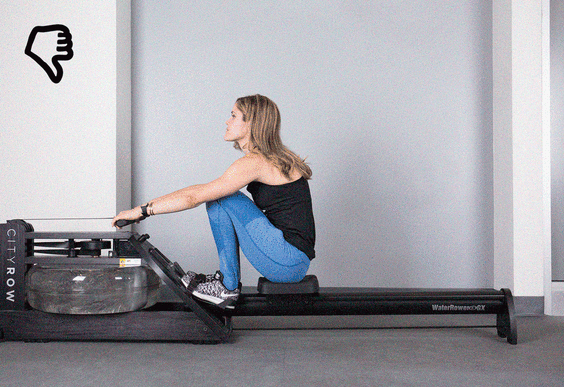
Additional Tips for Using the Row Machine
Here are some additional tips to enhance your rowing experience and get the most out of your workout.
Breathing Techniques
During rowing, it’s important to establish a breathing rhythm that works for you. Most people find it helpful to exhale during the drive phase and inhale during the recovery phase. Experiment with different breathing patterns and find what feels most comfortable and natural for you.
Maintaining a Consistent Stroke Rate
Stroke rate refers to the number of strokes you take per minute. Maintaining a consistent stroke rate can help you develop a steady and efficient rowing rhythm. Pay attention to your stroke rate and try to maintain a pace that feels comfortable and allows you to maintain proper form.
Monitoring Rowing Metrics
Many row machines come equipped with monitors that display various metrics such as time, distance, calories burned, and stroke rate. Monitoring these metrics can help you track your progress and stay motivated. Experiment with different metrics and find which ones are most meaningful to you.
Incorporating Upper Body Exercises
Rowing primarily targets your lower body and back, but you can also incorporate upper body exercises to further strengthen your arms, shoulders, and chest. After your rowing workout, you can incorporate exercises such as push-ups, dumbbell curls, and shoulder presses to target your upper body muscles.
Common Rowing Mistakes to Avoid
To ensure a safe and effective rowing experience, it’s important to avoid common rowing mistakes that can compromise your form and undermine the effectiveness of your workout.
Using Excessive Back Bend
Avoid excessive back bend during the finish phase of your rowing stroke. While it’s important to lean back slightly, excessive bending of the back can put strain on your spine and increase the risk of injury. Focus on a controlled and moderate lean back to maintain proper form.
Pulling with Only Your Arms
Rowing is a full-body exercise that involves a coordinated effort from your legs, core, and arms. Avoid relying solely on your arms to do the work. Instead, engage your legs and core muscles to generate power and support your movements. This will help you achieve a more effective and efficient rowing stroke.
Rushing the Recovery Phase
The recovery phase of rowing is just as important as the drive phase. It’s a time to reset, prepare for the next stroke, and allow your muscles to recover. Avoid rushing through the recovery phase and ensure that you fully extend your legs, lean forward, and slide the seat back to the starting position. This will help you maintain proper rhythm and maximize your efficiency.
Neglecting to Engage the Core
Your core muscles play a crucial role in stabilizing your spine and supporting your movements during rowing. Neglecting to engage your core can lead to poor posture and decrease the effectiveness of your workout. Focus on keeping your core muscles engaged throughout the rowing stroke to maintain stability and optimize your performance.
Holding Your Breath
It’s common to hold your breath during exertion, but this can lead to increased strain and decreased performance. Remember to breathe continuously and rhythmically throughout your rowing workout. Exhale during the drive phase and inhale during the recovery phase to maintain a steady breathing pattern.
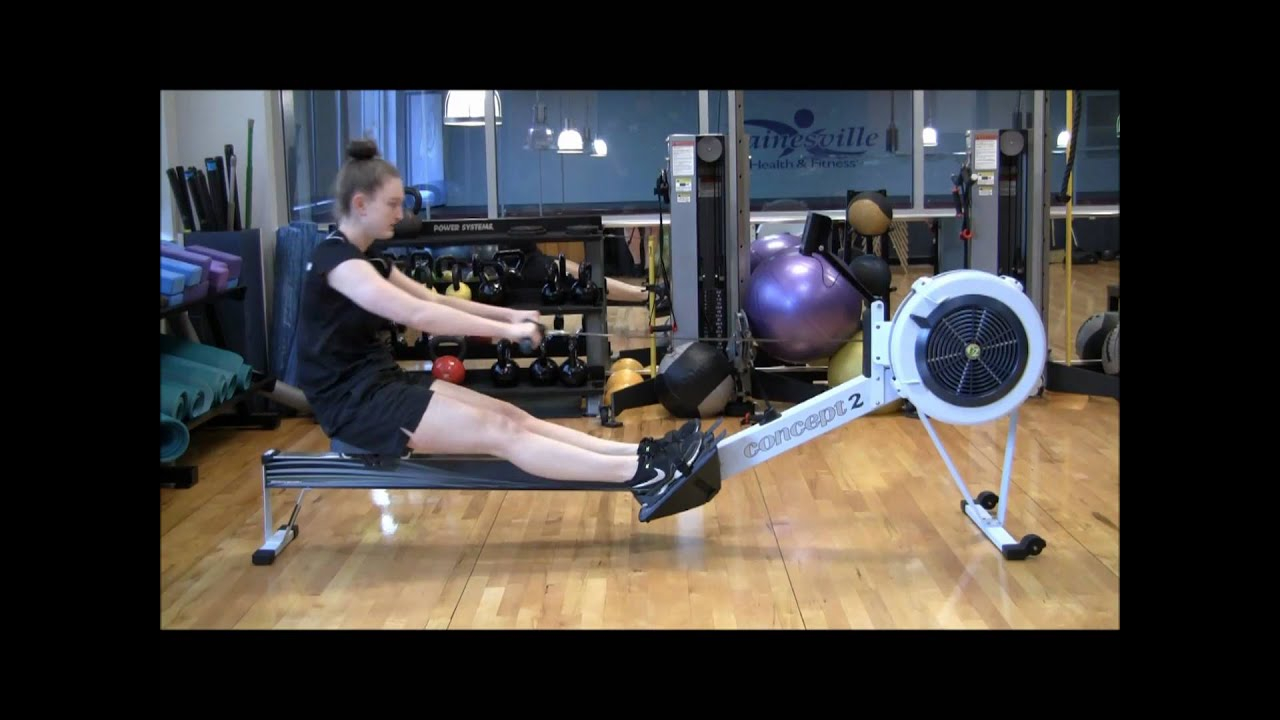
Rowing Machine Maintenance
To ensure the longevity and safe operation of your row machine, regular maintenance is important. Here are some maintenance tasks you can perform to keep your row machine in good working condition.
Cleaning and Wiping Down
After each use, wipe down the row machine with a clean cloth to remove any sweat or dirt. This will help prevent the build-up of bacteria and ensure a clean and hygienic workout environment.
Inspecting for Loose Parts
Regularly inspect your row machine for any loose parts or screws. Tighten any loose bolts or screws to ensure that the machine remains stable and safe to use.
Checking the Monitor and Cables
Inspect the monitor and cables of your row machine to ensure that they are in good working condition. Check for any loose connections or signs of wear and tear. If necessary, consult the user manual or contact the manufacturer for assistance.
Maintaining Proper Chain Tension
If your row machine has a chain, it’s important to maintain proper chain tension. Consult the user manual for specific instructions on adjusting the chain tension if needed.
Staying Motivated and Tracking Progress
To stay motivated and track your progress on the row machine, consider implementing these strategies.
Setting Achievable Goals
Set achievable goals for your rowing workouts. Whether it’s increasing your rowing distance, improving your stroke rate, or reaching a certain time goal, having specific targets can keep you motivated and engaged in your workouts.
Tracking Your Rowing Sessions
Keep track of your rowing sessions in a log or through a fitness app. Record important metrics such as distance, time, and calories burned. This will allow you to monitor your progress and reflect on your achievements.
Joining Rowing Challenges
Consider joining rowing challenges or competitions to add an element of excitement and friendly competition to your workouts. Many fitness apps and online platforms offer virtual rowing challenges that allow you to compete with others and earn rewards for your accomplishments.
Rewarding Yourself for Milestones
Celebrate your milestones and achievements along the way. Whether it’s treating yourself to a small reward, sharing your progress with friends and family, or simply acknowledging your hard work, taking time to recognize your accomplishments can boost your motivation and keep you engaged in your rowing journey.
By following these guidelines and incorporating rowing workouts into your fitness routine, you can enjoy the benefits of this full-body exercise while staying safe and injury-free. Remember to listen to your body, maintain proper form, and gradually progress in intensity and duration. Keep track of your progress, set achievable goals, and stay motivated to make rowing a rewarding and enjoyable part of your fitness journey.

